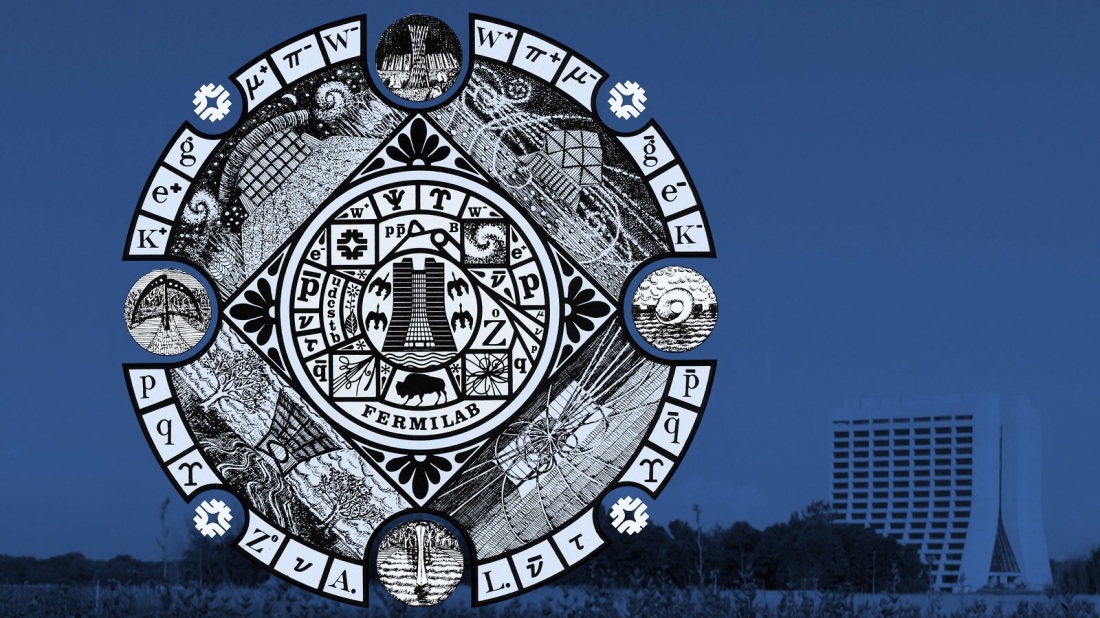
FNAL Art Image by Angela Gonzales
12.5.22
Emily Driehaus
Dark matter makes up about 27% of the matter and energy budget in the universe but scientists do not know much about it. They do know that it is cold, meaning that the particles that make up dark matter are slow-moving. It is also difficult to detect dark matter directly because it does not interact with light. However, scientists at the U.S. Department of Energy’s Fermi National Accelerator Laboratory have found a way to look for dark matter using quantum computers.
Aaron Chou, a senior scientist at Fermilab, works on detecting dark matter through quantum science. As part of DOE’s Office of High Energy Physics QuantISED program, he has developed a way to use qubits, the main component of quantum computing systems, to detect single photons produced by dark matter in the presence of a strong magnetic field.
How quantum computers could detect dark matter
A classical computer processes information with binary bits set to either 1 or 0. The specific pattern of ones and zeros makes it possible for the computer to perform certain functions and tasks. In quantum computing, however, qubits exist at both 1 and 0 simultaneously until they are read, due to a quantum mechanical property known as superposition. This property allows quantum computers to efficiently perform complex calculations that a classical computer would take an enormous amount of time to complete.
“Qubits work by manipulating single excitations of information, for example, single photons,” said Chou. “So, if you’re working with such small packets of energy as single excitations, you’re far more susceptible to external disturbances.”
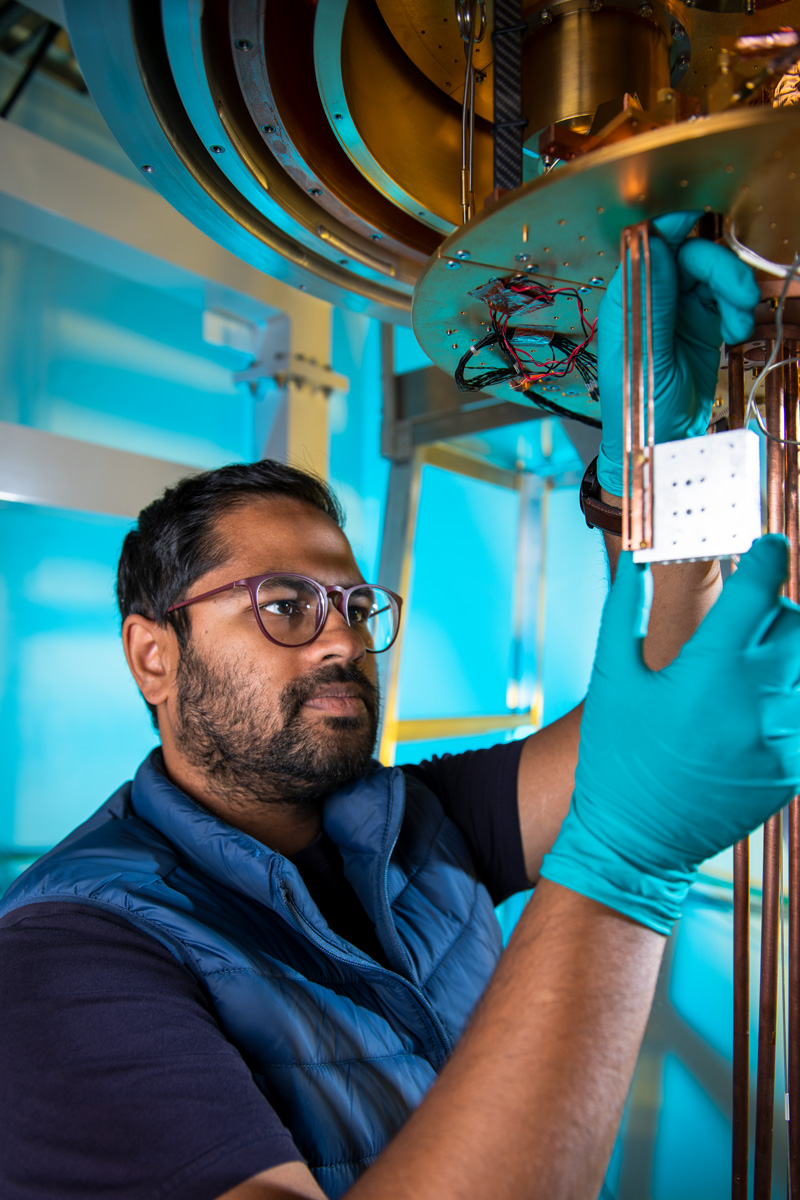
Akash Dixit works on the team that uses quantum computers to look for dark matter. Here, Dixit holds a microwave cavity containing a superconducting qubit. The cavity has holes in its side in the same way the screen on a microwave oven door has holes; the holes are simply too small for microwaves to escape. Photo: Ryan Postel, Fermilab.
In order for qubits to operate at these quantum levels, they must reside in carefully controlled environments that protect them from outside interference and keep them at consistently cold temperatures. Even the slightest disturbance can throw off a program in a quantum computer. With their extreme sensitivity, Chou realized quantum computers could provide a way to detect dark matter. He recognized that other dark matter detectors need to be shielded in the same way quantum computers are, further solidifying the idea.
“Both quantum computers and dark matter detectors have to be heavily shielded, and the only thing that can jump through is dark matter,” Chou said. “So, if people are building quantum computers with the same requirements, we asked ‘why can’t you just use those as dark matter detectors?’”
Where errors are most welcome
When dark matter particles traverse a strong magnetic field, they may produce photons that Chou and his team can measure with superconducting qubits inside aluminum photon cavities. Because the qubits have been shielded from all other outside disturbances, when scientists detect a disturbance from a photon, they can infer that it was the result of dark matter flying through the protective layers.
“These disturbances manifest as errors where you didn’t load any information into the computer, but somehow information appeared, like zeroes that flip into ones from particles flying through the device,” he said.
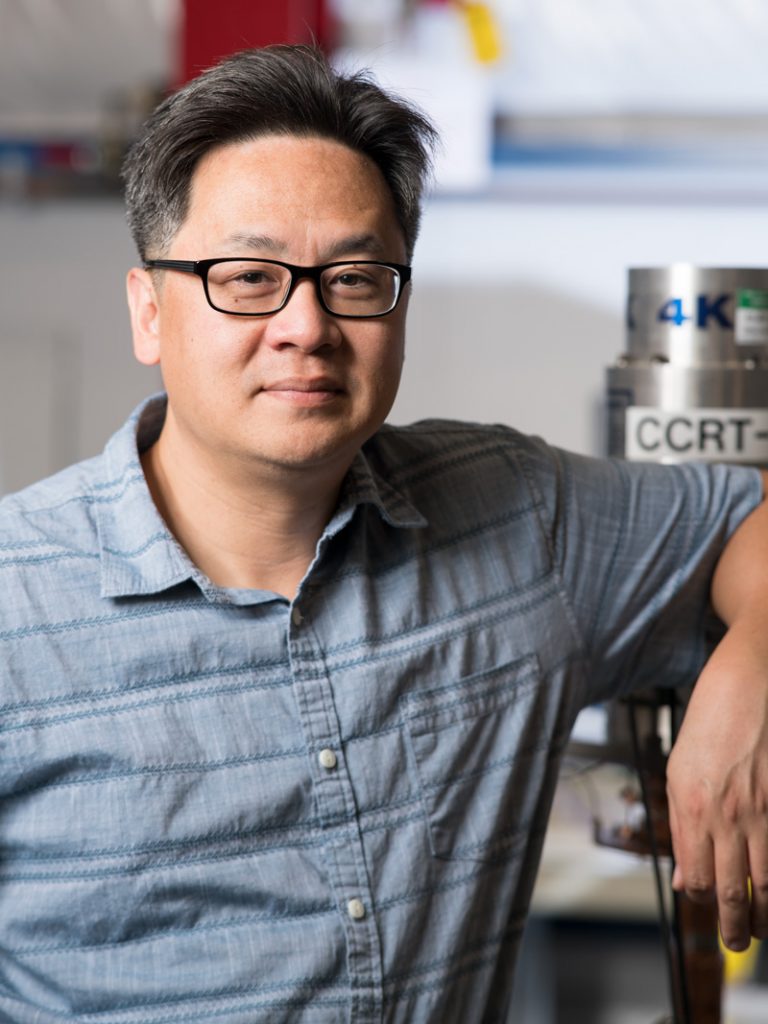
Scientist Aaron Chou leads the experiment that searches for dark matter using superconducting qubits and cavities. Photo: Ryan Postel, Fermilab.
So far, Chou and his team have demonstrated how the technique works and that the device is incredibly sensitive to these photons. Their method has advantages over other sensors, such as being able to make multiple measurements of the same photon to ensure a disturbance was not just caused by another fluke. The device also has an ultra-low noise level, which allows for a heightened sensitivity to dark matter signals.
“We know how to make these tunable boxes from the high-energy physics community, and we worked together with the quantum computing people to understand and transfer the technology for these qubits to be used as sensors,” Chou said.
From here, they plan to develop a dark matter detection experiment and continue improving upon the design of the device.
Using sapphire cavities to catch dark matter
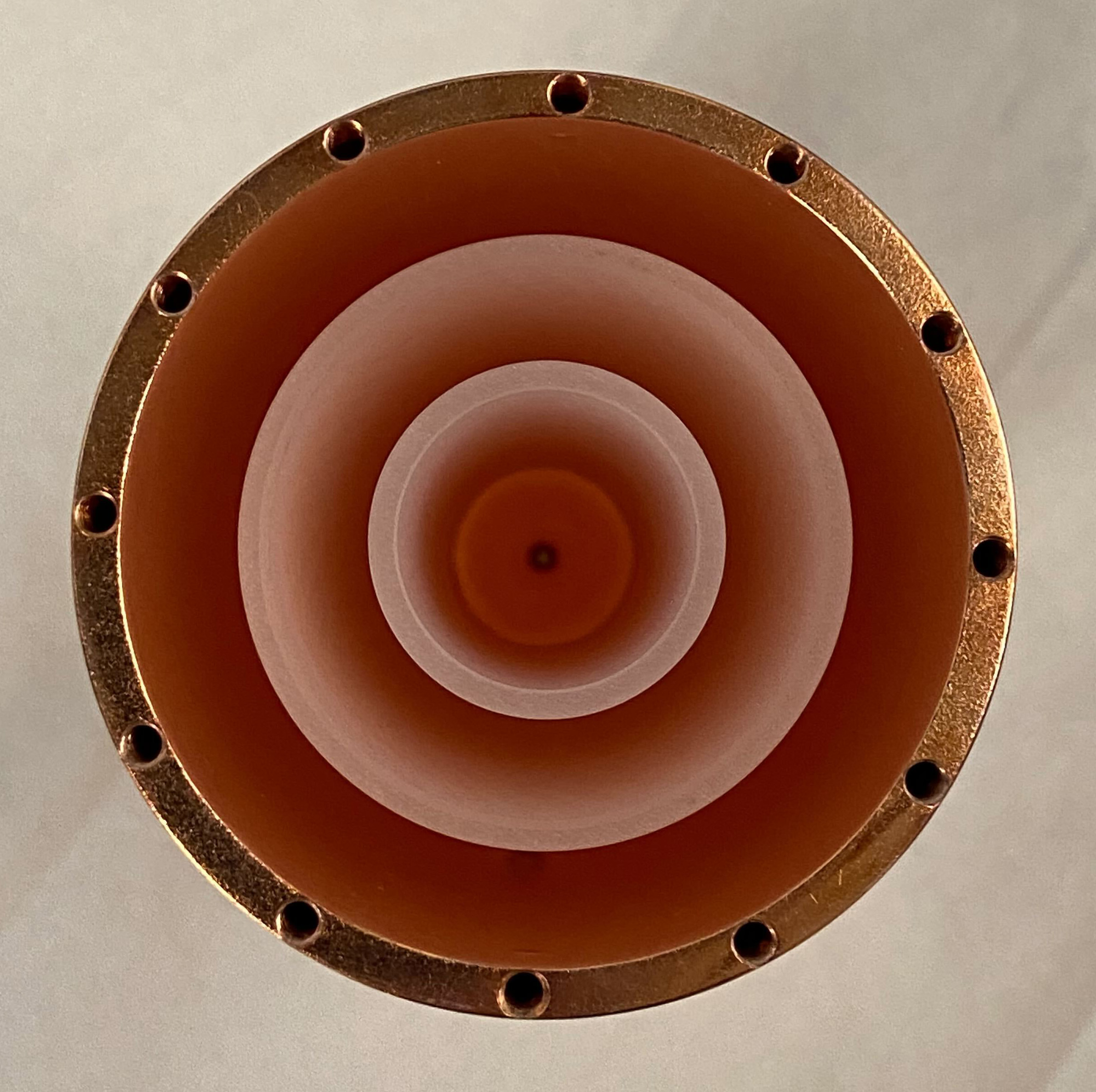
These new sapphire photon cavities will help lead the team closer to running dark matter experiments that combine aspects from both physics and quantum science. Photo: Ankur Agrawal, University of Chicago.
“This apparatus tests the sensor in the box, which holds photons with a single frequency,” Chou said. “The next step is to modify this box to turn it into kind of a radio receiver in which we can change the dimensions of the box.”
By altering the dimensions of the photon cavity, it will be able to sense different wavelengths of photons produced by dark matter.
“The waves that can live in the box are determined by the overall size of the box. In order to change what frequencies and which wavelengths of dark matter we want to look for, we actually have to change the size of the box,” said Chou. “That’s the work we’re currently doing; we’ve created boxes in which we can change the lengths of different parts of it in order to be able to tune into dark matter at different frequencies.”
The researchers are also developing cavities made from different materials. The traditional aluminum photon cavities lose their superconductivity in the presence of the magnetic field necessary for producing photons from dark matter particles.
“These cavities cannot live in high magnetic fields,” he said. “High magnetic fields destroy the superconductivity, so we’ve made a new cavity made out of synthetic sapphire.”
Developing these new, tunable sapphire photon cavities will lead the team closer to running dark matter experiments that combine aspects from both physics and quantum science.
__________________________________
Dark Matter Background
Fritz Zwicky discovered Dark Matter in the 1930s when observing the movement of the Coma Cluster., and Vera Rubin a Woman in STEM, denied the Nobel, some 30 years later, did most of the work on Dark Matter.
 Fritz Zwicky.
Fritz Zwicky.
 Coma cluster via NASA/ESA Hubble, the original example of Dark Matter discovered during observations by Fritz Zwicky and confirmed 30 years later by Vera Rubin.
Coma cluster via NASA/ESA Hubble, the original example of Dark Matter discovered during observations by Fritz Zwicky and confirmed 30 years later by Vera Rubin.
In modern times, it was astronomer Fritz Zwicky, in the 1930s, who made the first observations of what we now call dark matter. His 1933 observations of the Coma Cluster of galaxies seemed to indicated it has a mass 500 times more than that previously calculated by Edwin Hubble. Furthermore, this extra mass seemed to be completely invisible. Although Zwicky’s observations were initially met with much skepticism, they were later confirmed by other groups of astronomers.
Thirty years later, astronomer Vera Rubin provided a huge piece of evidence for the existence of dark matter. She discovered that the centers of galaxies rotate at the same speed as their extremities, whereas, of course, they should rotate faster. Think of a vinyl LP on a record deck: its center rotates faster than its edge. That’s what logic dictates we should see in galaxies too. But we do not. The only way to explain this is if the whole galaxy is only the center of some much larger structure, as if it is only the label on the LP so to speak, causing the galaxy to have a consistent rotation speed from center to edge.
Vera Rubin, following Zwicky, postulated that the missing structure in galaxies is dark matter. Her ideas were met with much resistance from the astronomical community, but her observations have been confirmed and are seen today as pivotal proof of the existence of dark matter.
 Astronomer Vera Rubin at the Lowell Observatory in 1965, worked on Dark Matter (The Carnegie Institution for Science).
Astronomer Vera Rubin at the Lowell Observatory in 1965, worked on Dark Matter (The Carnegie Institution for Science).
 Vera Rubin, with Department of Terrestrial Magnetism (DTM) image tube spectrograph attached to the Kitt Peak 84-inch telescope, 1970.
Vera Rubin, with Department of Terrestrial Magnetism (DTM) image tube spectrograph attached to the Kitt Peak 84-inch telescope, 1970.
 Vera Rubin measuring spectra, worked on Dark Matter(Emilio Segre Visual Archives AIP SPL).
Vera Rubin measuring spectra, worked on Dark Matter(Emilio Segre Visual Archives AIP SPL).
Dark Matter Research
 Super Cryogenic Dark Matter Search from DOE’s SLAC National Accelerator Laboratory at Stanford University at SNOLAB (Vale Inco Mine, Sudbury, Canada).
Super Cryogenic Dark Matter Search from DOE’s SLAC National Accelerator Laboratory at Stanford University at SNOLAB (Vale Inco Mine, Sudbury, Canada).
 LBNL LZ Dark Matter Experiment xenon detector at Sanford Underground Research Facility Credit: Matt Kapust.
LBNL LZ Dark Matter Experiment xenon detector at Sanford Underground Research Facility Credit: Matt Kapust.

 DAMA at Gran Sasso uses sodium iodide housed in copper to hunt for dark matter LNGS-INFN.
DAMA at Gran Sasso uses sodium iodide housed in copper to hunt for dark matter LNGS-INFN.
 Yale HAYSTAC axion dark matter experiment at Yale’s Wright Lab.
Yale HAYSTAC axion dark matter experiment at Yale’s Wright Lab.
 DEAP Dark Matter detector, The DEAP-3600, suspended in the SNOLAB (CA) deep in Sudbury’s Creighton Mine.
DEAP Dark Matter detector, The DEAP-3600, suspended in the SNOLAB (CA) deep in Sudbury’s Creighton Mine.
 The LBNL LZ Dark Matter Experiment Dark Matter project at SURF, Lead, SD.
The LBNL LZ Dark Matter Experiment Dark Matter project at SURF, Lead, SD.
 DAMA-LIBRA Dark Matter experiment at the Italian National Institute for Nuclear Physics’ (INFN’s) Gran Sasso National Laboratories (LNGS) located in the Abruzzo region of central Italy.
DAMA-LIBRA Dark Matter experiment at the Italian National Institute for Nuclear Physics’ (INFN’s) Gran Sasso National Laboratories (LNGS) located in the Abruzzo region of central Italy.
 DARWIN Dark Matter experiment. A design study for a next-generation, multi-ton dark matter detector in Europe at The University of Zurich [Universität Zürich](CH).
DARWIN Dark Matter experiment. A design study for a next-generation, multi-ton dark matter detector in Europe at The University of Zurich [Universität Zürich](CH).
 PandaX II Dark Matter experiment at Jin-ping Underground Laboratory (CJPL) in Sichuan, China.
PandaX II Dark Matter experiment at Jin-ping Underground Laboratory (CJPL) in Sichuan, China.
 Inside the Axion Dark Matter eXperiment U Washington (US) Credit : Mark Stone U. of Washington. Axion Dark Matter Experiment.
Inside the Axion Dark Matter eXperiment U Washington (US) Credit : Mark Stone U. of Washington. Axion Dark Matter Experiment.

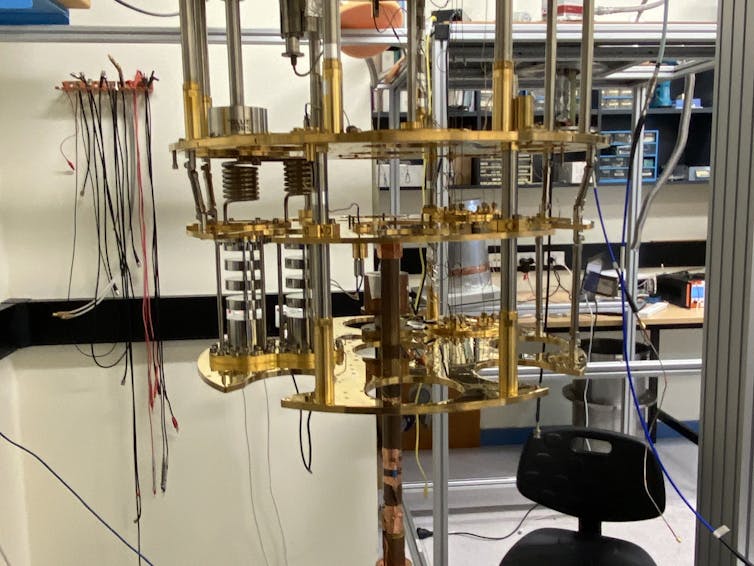
The University of Western Australia ORGAN Experiment’s main detector. A small copper cylinder called a “resonant cavity” traps photons generated during dark matter conversion. The cylinder is bolted to a “dilution refrigerator” which cools the experiment to very low temperatures.
__________________________________
See the full article here .
Comments are invited and will be appreciated, especially if the reader finds any errors which I can correct. Use “Reply”.

five-ways-keep-your-child-safe-school-shootings
Please help promote STEM in your local schools.
The DOE’s Fermi National Accelerator Laboratory, located just outside Batavia, Illinois, near Chicago, is a United States Department of Energy national laboratory specializing in high-energy particle physics. Since 2007, Fermilab has been operated by the Fermi Research Alliance, a joint venture of the University of Chicago, and the Universities Research Association. Fermilab is a part of the Illinois Technology and Research Corridor.
Fermilab’s Tevatron was a landmark particle accelerator; until the startup in 2008 of the The European Southern Observatory [La Observatorio Europeo Austral][Observatoire européen austral][Europäische Südsternwarte](EU)(CL)[CERN] Large Hadron Collider(CH) near Geneva, Switzerland, it was the most powerful particle accelerator in the world, accelerating antiprotons to energies of 500 GeV, and producing proton-proton collisions with energies of up to 1.6 TeV, the first accelerator to reach one “tera-electron-volt” energy. At 3.9 miles (6.3 km), it was the world’s fourth-largest particle accelerator in circumference. One of its most important achievements was the 1995 discovery of the top quark, announced by research teams using the Tevatron’s CDF and DØ detectors. It was shut down in 2011.


In addition to high-energy collider physics, Fermilab hosts a series of fixed-target and neutrino experiments, such as The MicroBooNE (Micro Booster Neutrino Experiment),


NOνA (NuMI Off-Axis νe Appearance)

and Seaquest
Completed neutrino experiments include MINOS (Main Injector Neutrino Oscillation Search), MINOS+, MiniBooNE and SciBooNE (SciBar Booster Neutrino Experiment).
The MiniBooNE detector was a 40-foot (12 m) diameter sphere containing 800 tons of mineral oil lined with 1,520 phototube detectors. An estimated 1 million neutrino events were recorded each year.
SciBooNE sat in the same neutrino beam as MiniBooNE but had fine-grained tracking capabilities. The NOνA experiment uses, and the MINOS experiment used, Fermilab’s NuMI (Neutrinos at the Main Injector) beam, which is an intense beam of neutrinos that travels 455 miles (732 km) through the Earth to the Soudan Mine in Minnesota and the Ash River, Minnesota, site of the NOνA far detector.
The ICARUS neutrino experiment was moved from CERN to Fermilab.


In the public realm, Fermilab is home to a native prairie ecosystem restoration project and hosts many cultural events: public science lectures and symposia, classical and contemporary music concerts, folk dancing and arts galleries. The site is open from dawn to dusk to visitors who present valid photo identification.
Asteroid 11998 Fermilab is named in honor of the laboratory.
 The DOE’s Fermi National Accelerator Laboratory campus.
The DOE’s Fermi National Accelerator Laboratory campus.
 The DOE’s Fermi National Accelerator Laboratory/MINERvA. Photo Reidar Hahn.
The DOE’s Fermi National Accelerator Laboratory/MINERvA. Photo Reidar Hahn.
 The DOE’s Fermi National Accelerator LaboratoryDAMIC | The Fermilab Cosmic Physics Center.
The DOE’s Fermi National Accelerator LaboratoryDAMIC | The Fermilab Cosmic Physics Center.
 The DOE’s Fermi National Accelerator LaboratoryMuon g-2 studio. As muons race around a ring at the Muon g-2 studio, their spin axes twirl, reflecting the influence of unseen particles.
The DOE’s Fermi National Accelerator LaboratoryMuon g-2 studio. As muons race around a ring at the Muon g-2 studio, their spin axes twirl, reflecting the influence of unseen particles.
 The DOE’s Fermi National Accelerator Laboratory Short-Baseline Near Detector under construction.
The DOE’s Fermi National Accelerator Laboratory Short-Baseline Near Detector under construction.
 The DOE’s Fermi National Accelerator Laboratory Mu2e solenoid.
The DOE’s Fermi National Accelerator Laboratory Mu2e solenoid.
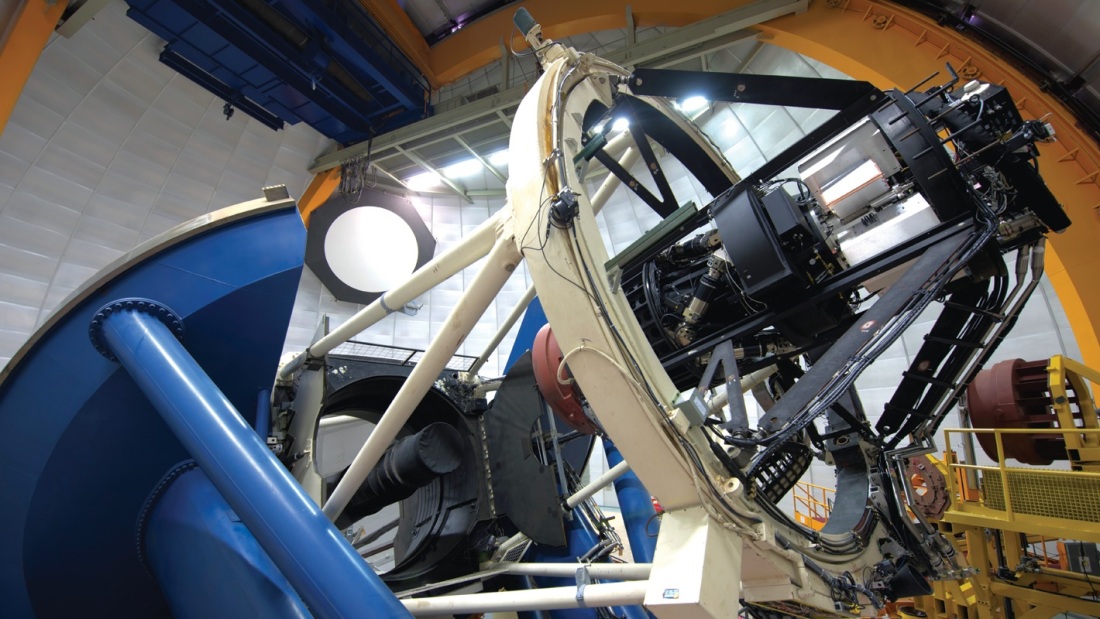 The Dark Energy Camera [DECam], built at The DOE’s Fermi National Accelerator Laboratory.
The Dark Energy Camera [DECam], built at The DOE’s Fermi National Accelerator Laboratory.
Weston, Illinois, was a community next to Batavia voted out of existence by its village board in 1966 to provide a site for Fermilab.
The laboratory was founded in 1969 as the National Accelerator Laboratory; it was renamed in honor of Enrico Fermi in 1974. The laboratory’s first director was Robert Rathbun Wilson, under whom the laboratory opened ahead of time and under budget. Many of the sculptures on the site are of his creation. He is the namesake of the site’s high-rise laboratory building, whose unique shape has become the symbol for Fermilab and which is the center of activity on the campus.
After Wilson stepped down in 1978 to protest the lack of funding for the lab, Leon M. Lederman took on the job. It was under his guidance that the original accelerator was replaced with the Tevatron, an accelerator capable of colliding protons and antiprotons at a combined energy of 1.96 TeV. Lederman stepped down in 1989. The science education center at the site was named in his honor.
The later directors include:
John Peoples, 1989 to 1996
Michael S. Witherell, July 1999 to June 2005
Piermaria Oddone, July 2005 to July 2013
Nigel Lockyer, September 2013 to the present
Fermilab continues to participate in the work at the Large Hadron Collider (LHC); it serves as a Tier 1 site in the Worldwide LHC Computing Grid and hosts 1000 U.S. scientists who work on the CMS project.




